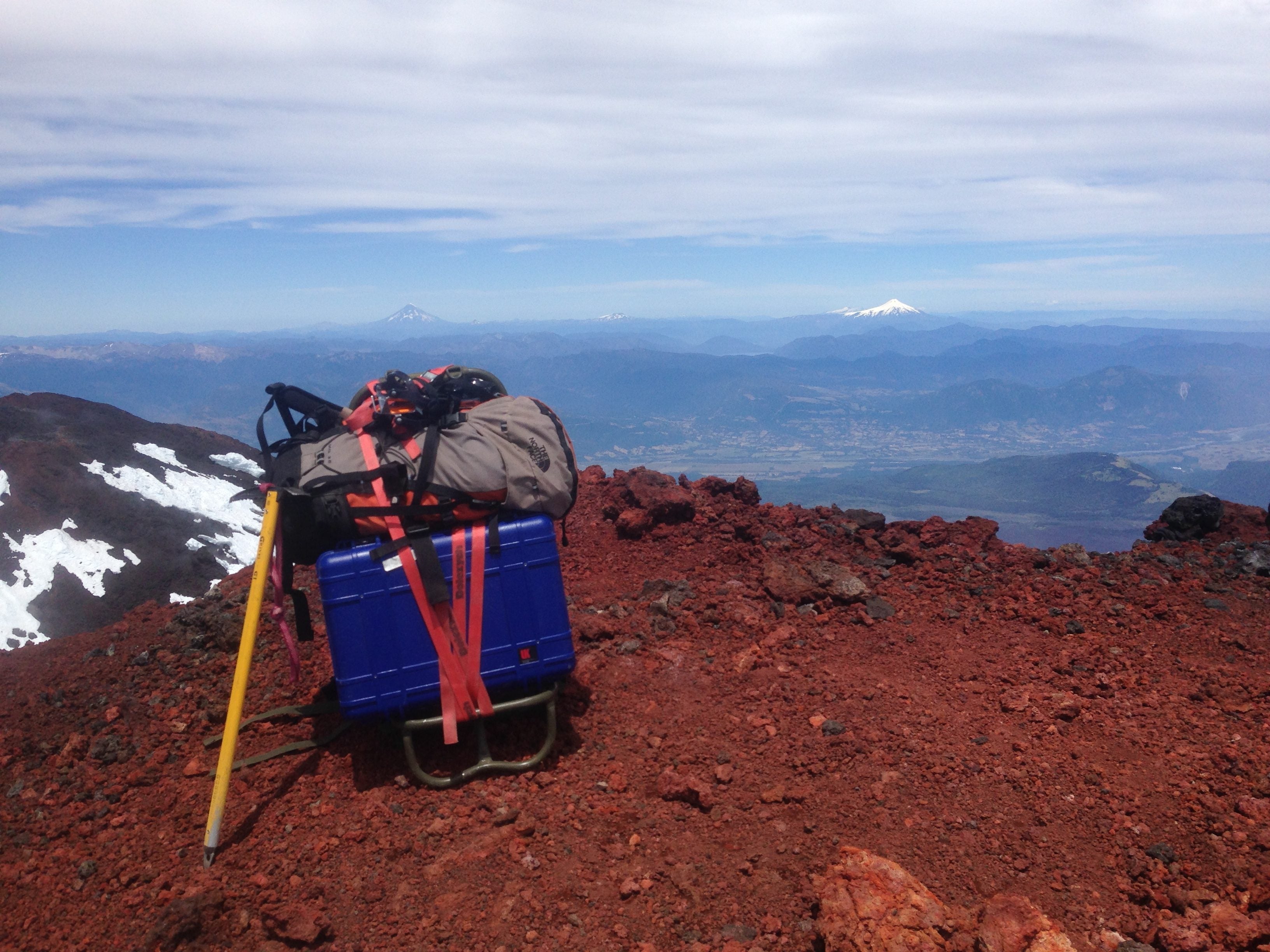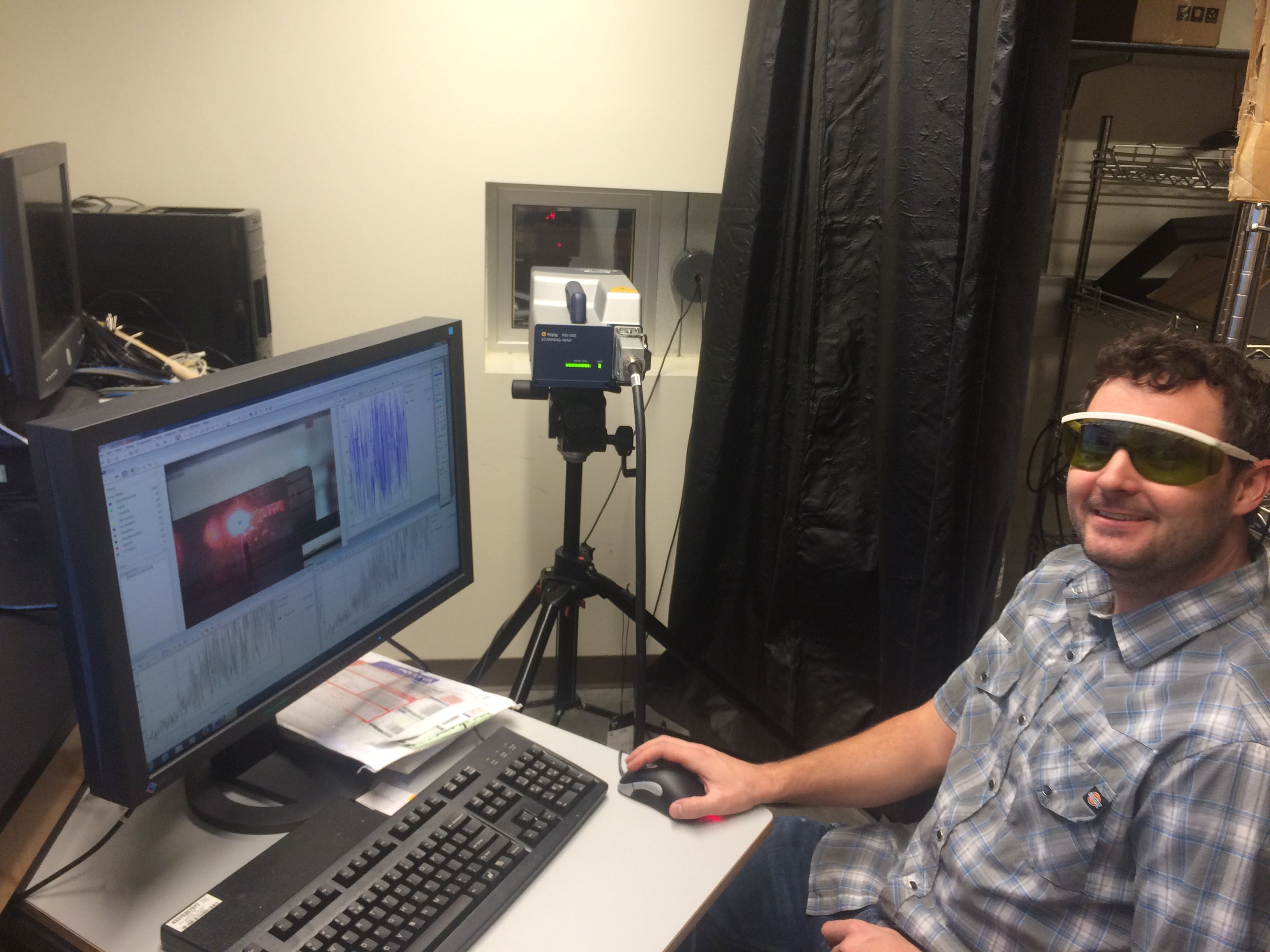
Along with the geophysical instrumentation at CGISS, the ESLab has 7 quick deploy Nanometrics Meridian Compact PH broadband seismometers. We use these sensors for anything from volcano monitoring to white water rapid studies and everything in between.

The ESLab also maintains a laser ultrasonics laboratory. Below is a list of the larger ticket items within that lab that we use to study wave propagation at the ultrasonic scale.
- Polytec Scanning Vibrometer (PSV-500)
- Bossa Nova TEMPO normal incidence interferometer
- Bossa Nova TEMPO 2D interferometer
- Spectra Physics Pulsed Nd:YAG laser
- AlazarTech ATS660 PCI oscilloscope card
- Computer-controlled X-Y translational stage system
- Computer-controlled rotational stage
- Optical bench (with vibration isolation and overhead shelving system)
- Cold room with optical (sapphire) windows (-20 C +/- 0.1 C)
- Function generators (SRS)
- Low-noise preamps (SRS)
- A lock-in amplifier (SRS)
- Ultrasonic P- and S-wave video-scan transducers
- Data acquisition PC